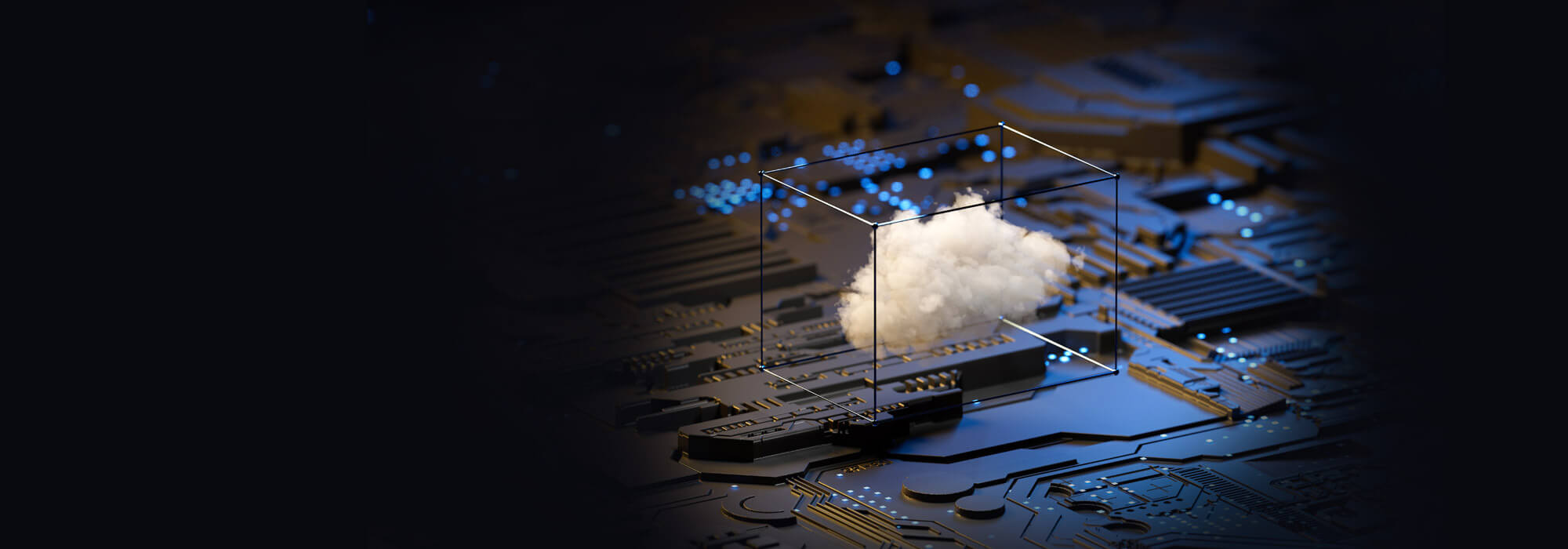
4 Essential Elements for a Comprehensive Cloud Security Stack
Digital transformation is pushing business entities to deploy products faster than ever, but at what cost? IT teams feel colossal pressure to balance speed with security. While they are adopting the cloud as a way to remain agile and scalable, this also means they are more vulnerable to malicious attacks. In 2022 alone, the average cost of a data breach in the US alone was $9.44 million.
In this article, we’ll examine how your company can reduce dependencies, improve security and delegate tasks to vendors while increasing development velocity at the same time. We will explore the latest industry trends and real-life examples, which will help you create a comprehensive security stack regardless of whether you’re just starting your journey on the cloud or looking to improve your current security stack further.
Understanding Critical Vulnerabilities and Threats to Cloud Companies
From weak passwords to insufficient security controls, the cloud presents a range of vulnerabilities that cybercriminals can exploit.
1. No Multi-factor Authentication (MFA)
MFA provides an extra layer of security compared to traditional single-factor authentication methods, such as password-only. Its absence is a significant vulnerability for cloud companies. Password-only authentication can be easily compromised through brute-force attacks or the reuse of passwords across multiple systems, resulting in unauthorized access to sensitive information or resources stored in the cloud.
2. Malicious Insiders
There are always individuals who have legitimate access to a system but use their privileges to carry out malicious activities. Insider attacks are hard to navigate because the responsibility doesn’t lie exclusively on cybersecurity teams’ shoulders. HR departments and managers should also step in to manage disgruntled employees and mitigate the risks of sabotage, therefore running the risk that “too many cooks spoil the broth.”
You must implement strict access controls and track user activity for suspicious behavior to prevent this. It’s also advisable to have an incident response plan with clear procedures for detecting, investigating, and responding to incidents.
3. Distributed Denial of Service (DDoS) Attacks
DDoS attacks aim to take down web services by flooding the server with overwhelming requests from various sources (essentially overloading it). This results in the server becoming unable to respond to legitimate requests, making the web service unavailable.
You can defend your firm against DDoS attacks by monitoring traffic to detect unusual spikes, using firewalls to block malicious traffic, and having backup systems to keep services running even during an attack.
4. Insecure APIs
APIs play a significant role in making digital experiences more connected and efficient. But if an API lacks proper authentication, it can allow unauthorized access to sensitive data stored in the cloud, leading to data breaches and loss of confidential information. Similarly, APIs with weak or broken access controls can allow attackers to bypass established restrictions.
To make your API security robust, implement MFA across the organization and ensure that all the transmitted data is encrypted using SSL/TLS. You must also be diligent about who all have access to the API keys.
5. Misconfigured Systems and Networks
Misconfigured systems and networks leave gaps in security measures and expose sensitive data. Always double-check cloud storage security configurations to prevent such gaps after setting up a server. Moreover, you can ensure each person and tool only has access to the bare minimum information and resources they need to do their job effectively.
Why You Shouldn’t Jump Straight Into the Deep End
Choosing the perfect technology stack is critical for any cloud company, given how it can make or break a project. But with so many options available, it can be overwhelming to choose. Hence the need to follow a structured approach so that every decision you make is well-informed and well-reasoned. Here are a few steps you should take when finalizing your tech stack:
1. Determine Project Requirements and Goals
Before finalizing a tech stack, you must clearly understand what the project needs to accomplish, the total cost of ownership, and the performance it is expected to deliver. During these discussions, you’ll need to keep stakeholders in the loop, as much as the developers who will be completing the project.
2. Evaluate Technology Options and Their Suitability For the Project
With the project requirements ready, you must now evaluate different technology options and gauge their suitability. This involves considering factors such as the technology’s capabilities and limitations. It would help if you also looked at the level of support available for the technology (including community support and documentation) and its overall market adoption.
3. Consider Scalability, Cost, and Security
A tech stack must offer the ability to grow with your business and not hinder it. So, you could prioritize technologies with advanced security features such as data encryption for data (at rest and in transit), secure authentication and authorization mechanisms, and the ability to detect and respond to breaches. It’s also preferable for the tech stack to have a track record of being regularly updated to address recent vulnerabilities.
4. Assess Compatibility With Existing Systems and Tools
Interoperability between different systems and tools is an underrated factor and can streamline processes and help you save time and money by preventing duplication of effort.
5. Test and Evaluate Potential Tech Stacks Through Proof of Concept
It’s always a good idea to test and evaluate potential tech stacks through a proof of concept (POC). Apart from providing hands-on experience to the developers, this will help you identify any limitations or issues, including performance bottlenecks or security vulnerabilities, and will also provide valuable insights into how you will use the technology successfully in the final solution.
Does the ‘Perfect’ Tech Stack Exist?
Every cloud company needs a comprehensive security tech stack to maintain the trust of its customers and minimize the possibility of a security incident. To that end, the security tech stack should include a combination of technologies, processes, and tools that address various security threats and vulnerabilities. Here are a few recommended elements:
1. Identity Access Management (IAM)
IAM deals with the management of digital identities and their access to resources. In the context of the cloud, it is responsible for managing the identities of users, applications, and services that interact with a cloud infrastructure.
IAM tools provide a centralized repository for identity information, allowing administrators to define roles and permissions and enforce access control policies. Additionally, these tools can be integrated with other security domains, such as encryption and network security, to help cloud companies comply with various regulations and standards like GDPR and PCI DSS.
2. Pentesting Tools
Using pentesting tools, your IT team can simulate an attack that mimics the actions of a malicious third party and identify the vulnerabilities and weaknesses in the target system. The results can help you assess the resilience of your systems against real-world attacks, ensure you meet regulatory requirements, and drive continuous improvement in security posture. With regular tests, you also demonstrate your commitment to security to your users and customers.
3. Cloud Access Security Broker (CASB)
Whereas traditional security solutions often cannot provide adequate protection in dynamic and decentralized environments, CASBs provide a unified security layer that sits between the cloud service provider and the end user. CASBs allow you to maintain control and visibility over your cloud-based assets and manage all cloud-bound traffic, thus providing real-time protection against cyber threats.
4. Cloud Database
Without a doubt, a cloud database is a must-have for a cloud company. This database runs on a cloud-computing platform rather than on-premises hardware and is typically managed by a cloud service provider responsible for maintenance, upgrades, and backups. Cloud databases will make things more convenient for you. Here’s how:
- Centralized management: Cloud databases offer centralized and automated management, which reduces the need for manual configuration and maintenance. Therefore, you can save time and resources and focus on your bottom line.
- High availability: Data availability is crucial in any business, especially in a cloud environment. Cloud databases provide automatic failover and data replication, ensuring that your digital assets are protected and accessible at all times.
- Security: You can access robust security features, including encryption, access controls, and auditing, using cloud databases, which helps keep data safe from cyber threats.
Set Your Business Up For Success
Securing your company against critical vulnerabilities and threats is crucial to ensuring its longevity and success. Choosing the right technology stack is key to achieving this security. When selecting the tools your business needs, you can take your time with this process by considering compatibility, scalability, and reliability factors. When used correctly, your ideal tech stack will reduce the risk of breaches and provide a more secure environment for your clients and their data – plus, make your business success more sustainable.
Secure Your Business with CloudGuard
From code to cloud, Check Point CloudGuard’s CNAPP unifies cloud security, merging deeper security insights to prioritize risks and prevent critical attacks – providing more context, actionable security and smarter prevention. CloudGuard enhances visibility by enriching context, provides actionable remediation insights and speeds up threat mitigation across diverse cloud teams.
If you would like to see CloudGuard in action, please fill in the form to schedule a demo, and a cloud security expert will help to understand your needs.
If you have any other questions, please contact your local Check Point account representative or channel partner using the contact us link.









